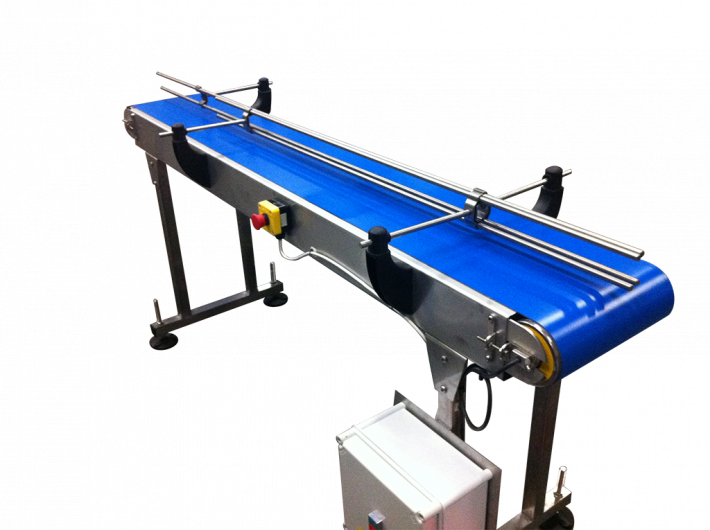Conveyor rollers help to make lighter work of moving pieces about with nominal time and effort, and thanks to the motor driven options, they require much less manpower also. From small wheels, belts and built in rollers there’s a wide selection of rollers offered on the present day market, whether you select a electric motor or physically powered system.
The’re a great many Steel Roller online pages in great Britain, if you’re searching for more information or perhaps even costs this site is a popular starting point for www.conveyorrollers.co.uk
Rollers are generally used to transport bulk components, and there are various different different kinds of rollers for specific applications. Rollers and other conveyors will be able to lift components, use vibratory movement to relocate products, and hang from overhead. Various other popular types include screw conveyors, chute conveyors and tow conveyors.
Lets take a closer look at some of the main types of conveyor.
The Plethora Of Conveyor Roller
These are handling techniques designed to use rollers mounted in frames to safely move objects. The factors you must think about are the weight capacity and height, in addition to the conveyor length. Roller conveyors are sometimes used in holding zones including loading docks, baggage handling or construction lines. Rollers use gravitational forces or manual power to transfer goods around and can be straight or curled conditional upon space or working environment.
Powered roller conveyors use motorised rollers mounted in frames to move goods and products about. The principle aspect to consider is the type of drive that you require. The main drive models include belts, chains and motors. Powered roller conveyors have a lot of uses, which include food handling, packaging and many other construction line companies.
Wheel conveyors use unpowered wheels to transfer things, either by gravity or manual power. If deciding on a wheel system, you will need to think about load capability, the actual physical dimensions and the electricity needs. Wheel conveyors are typically utilised for loading and unloading commercial transport, together with moving substantial large items which include pallets. Dependant upon the load specifications, wheel numbers and spacing can vary greatly.
Vibrating conveyors use rotary or linear vibration to transfer things or materials along. They may be commonly used to move bulk materials like gravel and coal. Depending on the required use, many sizes are available.
Overhead conveyors are installed to ceilings and make use of carts moved by chains, cables or other connections. They are most often utilised in businesses where the product is required to be hung, including parts handling systems, or for cooling functions. Depending upon the supposed use of the overhead model, the load carrying capability is quite important. A lot of approaches are powered although you can find the ones are hand operated.
Belt conveyors use continuous belts to transport merchandise. These are generally regularly used in food services, for baggage handling, in product packaging and in the mailing service, even when you would most commonly associate them with the money registers in grocery stores. Belt conveyors usually are powered and function at a number of rates of speed. Belts can be worked horizontally or maybe at slope inclines.
Beltless magnetic conveyors utilise moving magnets below stationary plates to manoeuvre magnetic or ferrous materials. This could be comprising of scrap steel or equipment parts. Beltless magnetic conveyors can be flat, vertical or a mixture of both of them.
The Uses Of Roller Conveyors
Your decision concerning conveyor system depends on the product model, velocity, elevation and industry focus unique for your business. A lot of types of conveyor, for instance belts and vibrating units, could be used over long distances in business sectors such as mining and raw materials. But bear in mind, a vibrating belt system would be of little use in food manufacture or electronics products market sectors.
Conveyors could in fact be manually powered, which is when products are moved along by hand over the rollers or wheels. Others are air powered or engine powered. Typically, however, they are driven by electric-powered engines. This either occurs directly or through reduction gears, chains and sprockets.
Materials and units are usually moved on the top surfaces of conveyors, although overhead conveyors will be the noticeable exception.
How To Choose A Conveyor Roller
If you’re attempting to move merchandise very easily and with negligible time and effort . and the greatest possible personal safety, you must consider your needs and requirements with care. Your later final choice will be dependent upon the industry sector in which you work, selecting the power source (or otherwise) and also the spending budget which you have.
Conveyor rollers might be the most simple and highly versatile system and also one of the most economical. Roller systems are also simple to operate and maintain and can be adapted to a array of industrial sectors and uses. Equipment can be custom-designed to for your available space and rollers can be selected by materials, weight capacity, speed capacity and more. This is why conveyor rollers are probably the most popular options for UK businesses.
Roller conveyor platforms can be custom-designed from modular components. These include straight sections, bends, transitions, merges, dividers and more. Manufacturing companies may provide design ability and design and installation guidance, helping you to get the most beneficial device for your need. They can also provide on-going maintenance assistance and spare parts which keeps your products and your business moving.
If it’s time you developed your company and you would like to streamline production, storage, shipping or more, then a conveyor roller system could possibly be precisely what you’ve been looking for.


